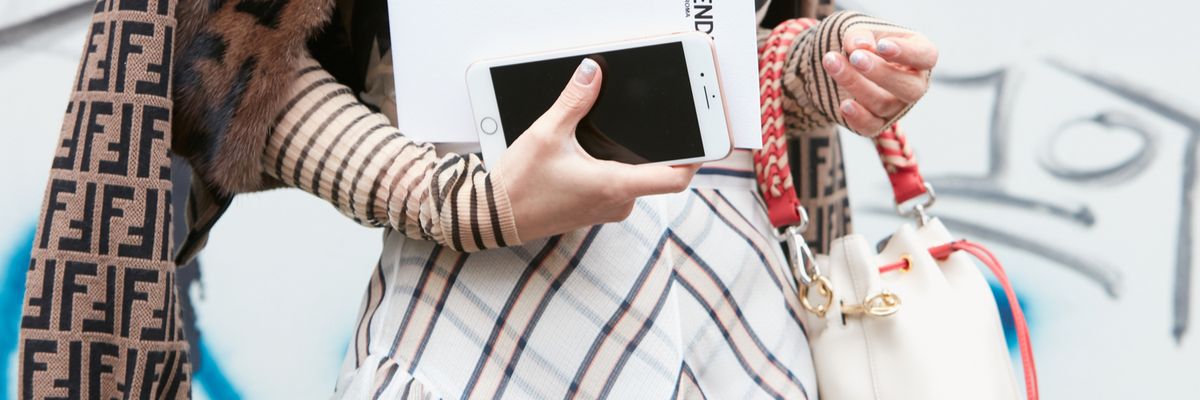The fact that TikTok is still relatively new, means that it remains challenging for fashion brands to see what truly works in regards to marketing themselves or a product. TikTok presents itself as a lighthearted and high-spirited platform. The app inspires users to participate in challenges, encouraging interaction between brands and consumers to be more personal.
How high-street and high-end are using TikTok
High-street fashion brands such as Pretty Little Thing, Boohoo, and Asos, who excel in influencer marketing, are already building up quite a following on TikTok. These brands choose to collaborate with influencers that have followers with budgets that reflect the cost of their product. These same followers also fit into the demographic that would use TikTok, mainly GenZ.
Some high-end fashion names such as Gucci and JW Anderson have also picked up on viral trends surrounding their brand, for example, the #GucciModelChallenge, where users recreated Gucci-inspired looks using their own clothes. Since this trend went viral on TikTok, Gucci has decided to feature talents that took part in the challenge in a new video project with TikTok themselves.
TikTok creators also took to recreating their own versions of a JW Anderson cardigan that was pictured on Harry Styles. JW Anderson recognised the publicity around this trend, so much so that they released the pattern for the famous cardigan in order to encourage more users to jump onto the trend.
International modeling agency, IMG Models, has taken to TikTok to scout new models and talent. This shows that success could lie in getting models who are also on TikTok to start modeling for your brand, as they automatically share you with an audience.
Does it make sense for influencers to promote couture fashion brands?
TikTok has an audience that is made up majorly of GenZ users. High-end fashion brands may choose to use TikTok as a way to keep their brand relevant and spoken about. We are used to seeing influencers collaborate on social media with high-street brands like Pretty Little Thing and Misguided. These brands are affordable for the majority of an influencer’s audience, meaning that they can do their job of influencing efficiently as their audience are happy to spend £5-10 on a top or a dress.
YouTube star Emma Chamberlain, who holds ownership of 11.8 million Instagram followers and 9.79 Million YouTube subscribers, has recently embarked on a collaboration with Louis Vuitton. The major fashion label has gifted Emma Chamberlain clothes, invited her to events that have been featured in Vogue, and recently Emma attended the Louis Vuitton virtual Paris Fashion Week show.
Arguably, Emma Chamberlain’s audience tune into her social media platforms for her entertaining content. Her usual content consists of viral TikTok dances, hanging out with her friends, and sharing her favorite spots for fast food and coffee. This isn’t necessarily the same audience that will buy into major fashion designers such as Louis Vuitton – who have a loyal clientele willing to spend thousands on their brand.
Casting is crucial
In a feature that we published on the ‘Future of the Front Row’ in regards to influencers and fashion show attendance, writer Doug Schowengerdt said: “Casting is crucial; influencers must fit into the world of the brand. Those who value fit over reach are best positioned to create impactful partnerships through influencer collaborations”.
It is important to note that it is essential to match the right influencer with the right brand and project. Fashion isn’t just about creating great clothes, but inviting viewers into a vision of the future that is ever-adapting, pioneering, and ready for change.
Influencer and brand loyalty
If the consumer is loyal to an influencer or brand that they follow, it is likely that the price point of the item being marketed will not bear a great impact on whether the consumer decides to purchase.
As an example, social media influencer, and ex Love Island contestant Molly-Mae Hague is a brand ambassador for high-street brand Pretty Little Thing, therefore her content is heavily sponsored by the brand. On the other hand, Molly-Mae often shares posts featuring designer garments from brands like Louis Vuitton and Balenciaga. With an Instagram following of 5.1 million, it is likely that she has followers with budgets at either end of the scale. Therefore, larger influencers do have the potential to successfully promote both high-end and high-street goods to their following.
Luxury fashion house Balenciaga launched a shoppable campaign on TikTok over the Christmas period last year for users in France and the UK. The videos resulted in upwards of 25 million views, exposing the brand to a younger audience, resulting in over 4.5 million clicks to its landing page. This tells us that through influencer marketing on social media platforms, there could indeed be success in the merging of high-street and high-end. We may begin to see an increase in high-end fashion brands utilising platforms such as TikTok and YouTube in a way that meets the needs of their target audience.









